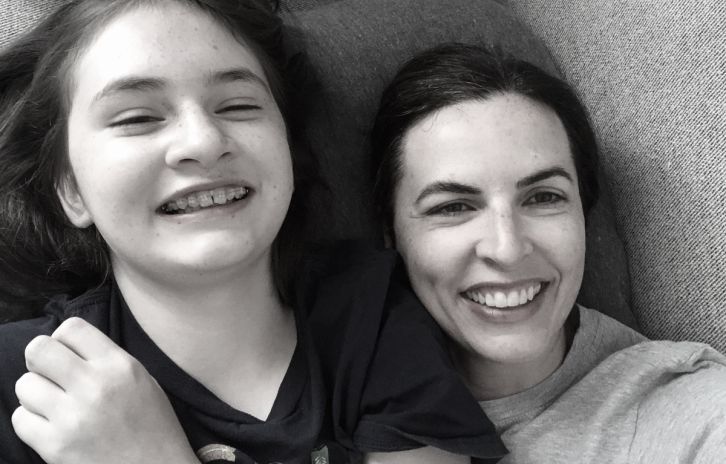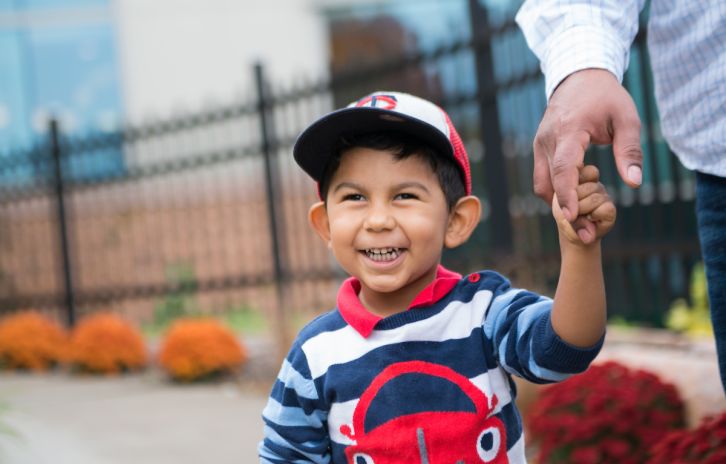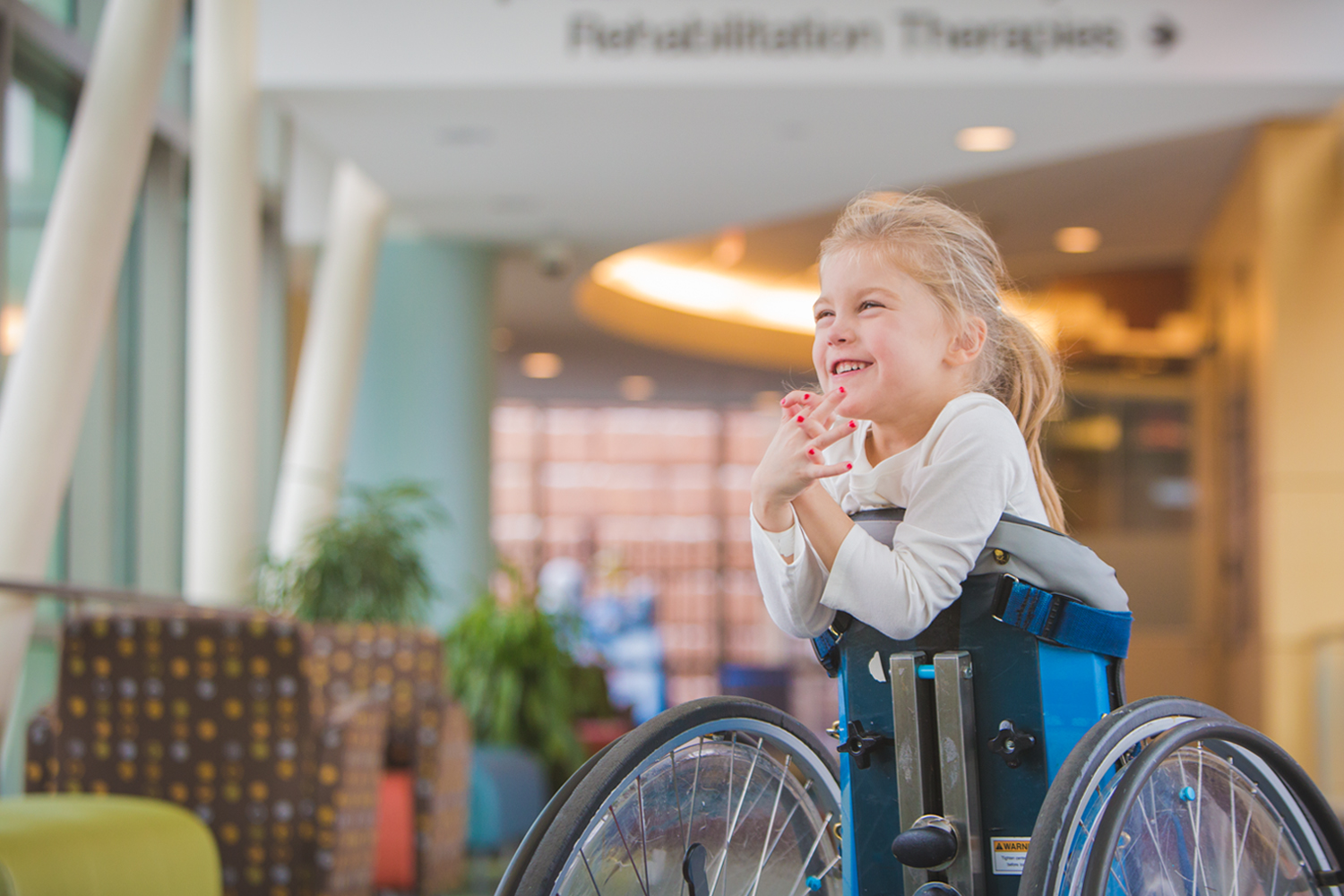
There are few moments in life as exciting and anxiety-inducing as the day you have your first child, but for Andrew Bailey and his wife, Amanda, things were a bit more complicated. Amanda was home in Connecticut getting ready for her baby shower. Andrew, a pitcher for the Boston Red Sox at the time, was in Seattle for an away game.
“You do your best to make plans, but there are some things in life you can't plan for,” Amanda says. “I was at 34 weeks, but our little girl decided to come early.”
Andrew hopped a cross-country flight to be by Amanda’s side for the birth of their daughter, Theodora, known affectionately as Teddy. But for the Baileys, their journey was just beginning.
Complications and Out of Body Experiences
 Teddy was born with a tracheoesophageal fistula (TEF) as well as esophageal atresia (EA), two potentially life-threatening conditions for a newborn. The Baileys spent the next three weeks in the neonatal intensive care unit.
Teddy was born with a tracheoesophageal fistula (TEF) as well as esophageal atresia (EA), two potentially life-threatening conditions for a newborn. The Baileys spent the next three weeks in the neonatal intensive care unit.
At the end of this time, Teddy received a clean bill of health and was finally able to go home. Five days later, Amanda found Teddy in her crib; she wasn’t breathing.
“It’s something you try not to think too much about now,” Amanda says. “I began performing CPR and called for help. It was the scariest six minutes of my life, but somehow I was able to do everything I needed to do to bring Teddy back to life.”
The Baileys were readmitted to the hospital and spent six weeks there while Teddy’s apnea spells were monitored and assessed. During this time, tests revealed that Teddy had what is known as periventricular leukomalacia (PVL), or severe damage in the white matter located around the ventricles of the brain.
The symptoms of PVL vary from child to child, but it often makes it much more likely that a child will have difficulty controlling certain motor movements. It also puts a child at a much greater risk of developing cerebral palsy (CP).
Five Years Later: A Diagnosis Doesn’t Define a Future
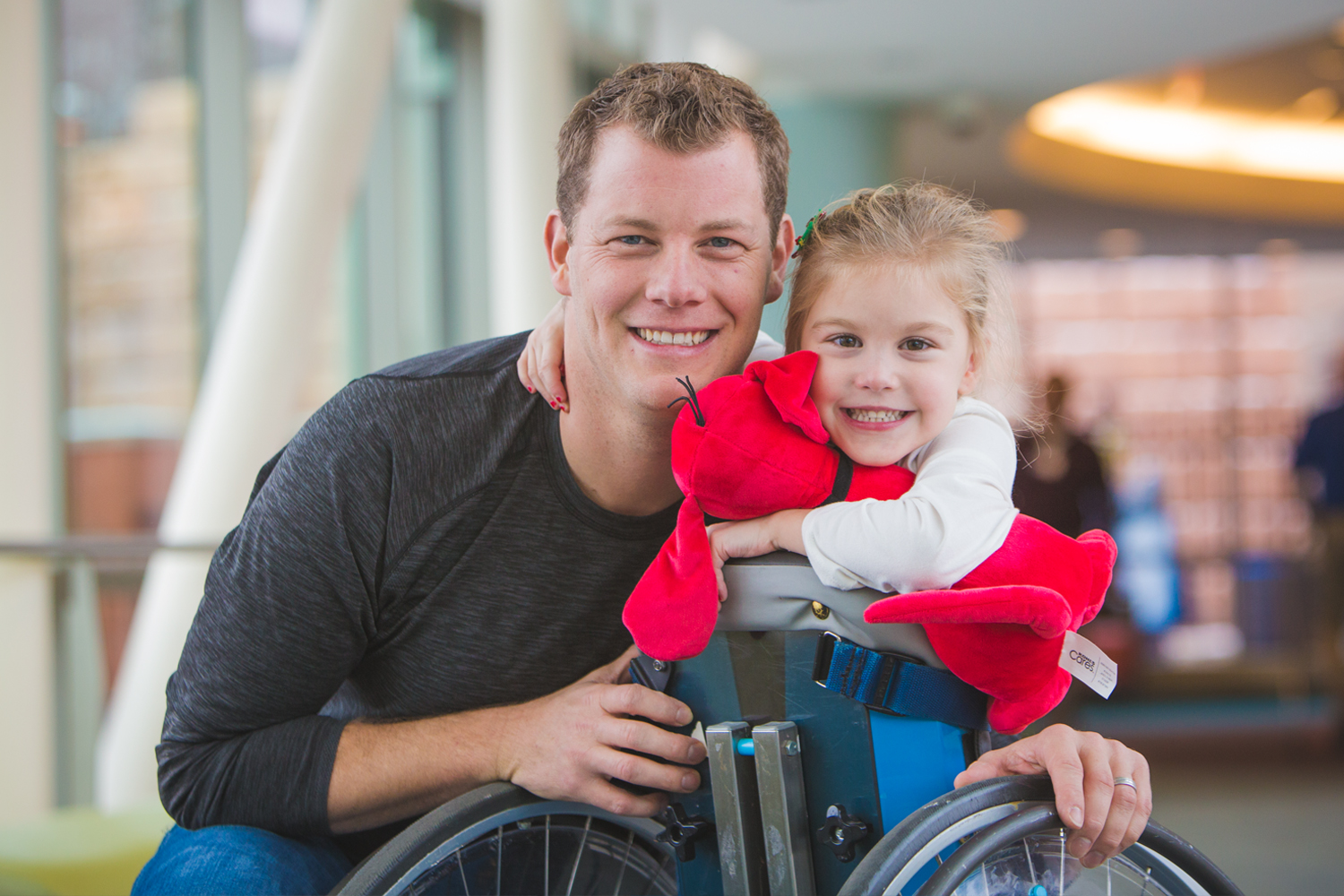
Everything written above is medically accurate and important for background, but while this information is certainly a part of the Baileys story, they would tell you that very little of it has anything to do with how they view Teddy’s future.
“When you’re going through all of this as a first-time parent, everything seems like the worst-case scenario,” Andrew says. “There’s a very steep learning curve, but with this knowledge comes competence and capability. We knew that it might take Teddy a little more time to do certain things and that we might need to do some things differently than other parents, but dealing with change is something we’ve always been good at.”
Teddy would receive a diagnosis of CP and need additional medical care and therapy as she grew, but she was rolling over at 10 months, walking at 20 months, and at age 6, is in every way on par with her peers cognitively.
“I know that we’re biased, but Teddy has such an effect on the people around her. She lights up every room she’s in,” Amanda says. “We never wanted her diagnosis to place limitations on what she could do, and it never has. She’s a happy-go-lucky kid who’s got the whole world in front of her.”
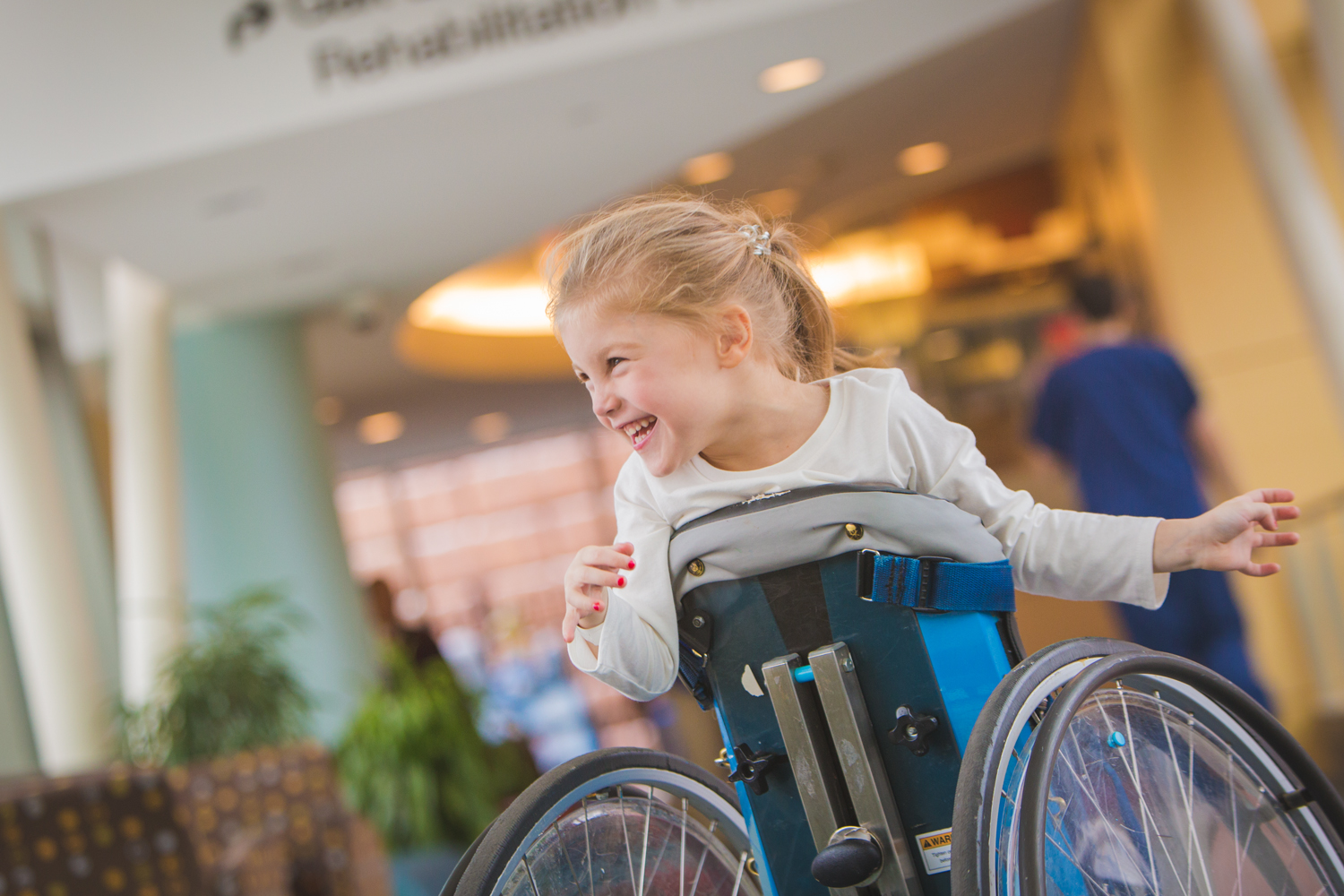
Rhizotomy Surgery Unlocks the Legs and Potential
CP isn’t just one condition. It’s actually a spectrum of movement disorders that manifest in symptoms that vary from child to child. In children like Teddy, who had PVL, the most common type of CP that results is called spastic diplegia. This is a form of CP characterized by tight, contracted muscles, especially in the legs.
“Teddy was walking, but the tightness in her muscles made it much more difficult for her,” Andrew says. “Our orthopedic surgeon in New York told us about a surgery, the selective dorsal rhizotomy, that he said could dramatically improve Teddy’s overall motor function. We asked him where we should go for the procedure and we were surprised when he told us about Gillette Children’s in St. Paul, Minnesota. He told us, ‘If it were my daughter, it’s where I’d go.’ That spoke volumes.”
Amanda wasn’t sold immediately.
“There was a part of me that felt like, Teddy’s doing just fine. She’s fine. I don’t want her to go through another surgery,” Amanda recounts. “But we decided we would visit and see how we felt.”
The Baileys visited Gillette Children’s in January of 2017, where Teddy was evaluated and had a gait analysis. It was determined that she would be a good candidate for rhizotomy surgery.
“That visit put us at ease,” Amanda says. “I wasn’t sure what to expect, but I was very impressed by how knowledgeable and kind the staff was. It was so clear that working with kids like our daughter was what they were all about. How do you say no to that?”
How to Be Awesome at Therapy, by Teddy Bailey
One of the main hurdles to overcome after rhizotomy surgery is the lengthy recovery process. Muscle tightness is both friend and foe, simultaneously holding you up while also holding you back.
Rhizotomy surgery removes the faulty nerve roots in the spinal cord that are misfiring and causing this tightness. This effectively relieves the spasticity of the muscles, the only problem being that now you have to learn how to use muscles you’ve never really used before. The rehabilitation process requires carefully scheduled physical and occupational therapy that usually lasts between four to six weeks.
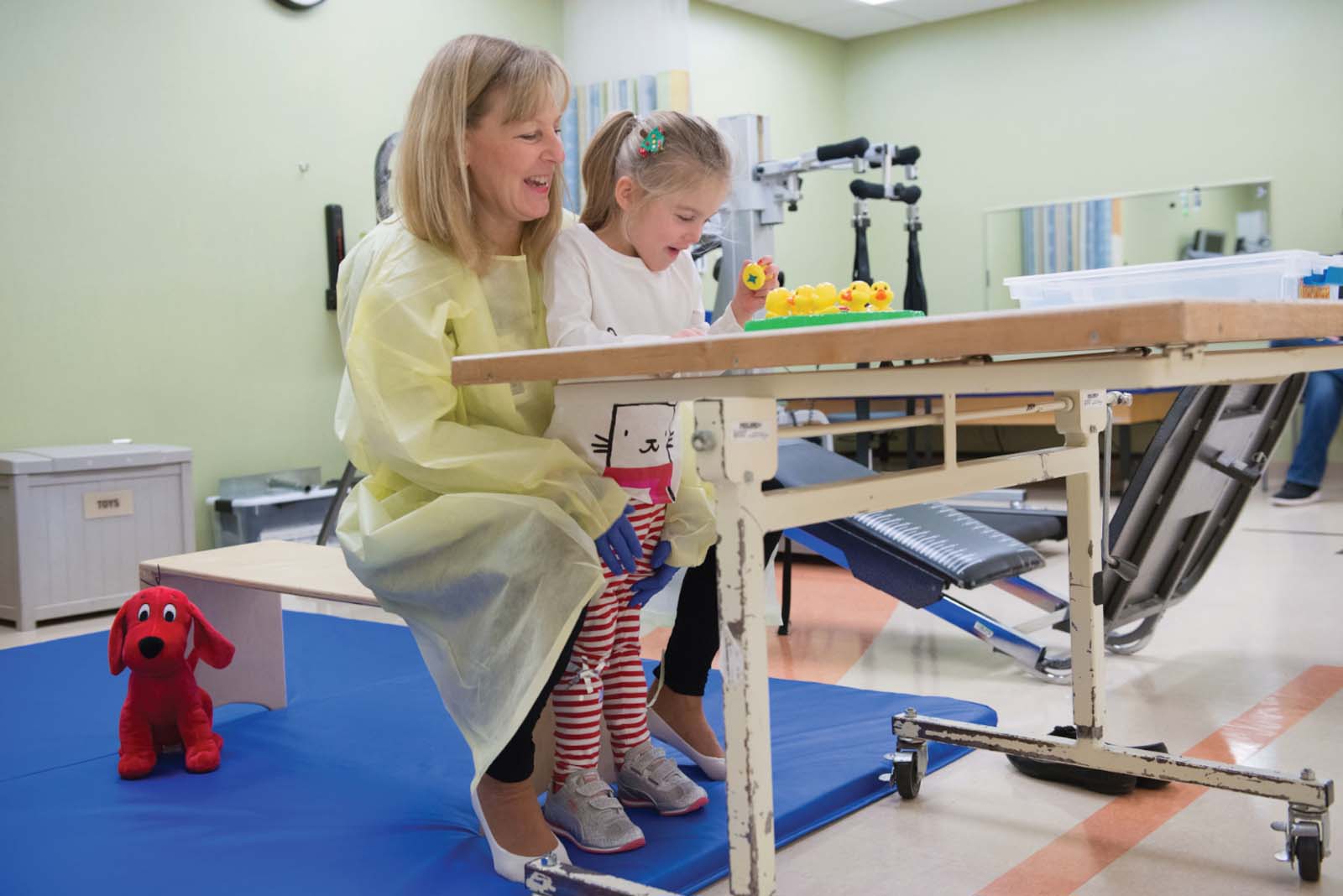 This would be a lot of time for anyone to spend in the hospital and seeing that most children who have a rhizotomy are around the age of five, at the outset the process can seem daunting.
This would be a lot of time for anyone to spend in the hospital and seeing that most children who have a rhizotomy are around the age of five, at the outset the process can seem daunting.
“It’s definitely something that you think about going in,” Amanda says. “While we were looking at other facilities, Gillette stood out because they do everything, the surgery and rehabilitation under one roof. And not just that, they’ve gone out of their way to make the hospital feel less clinical and more like a home away from home.”
Andrew says that for Teddy, as well as her younger and equally adorable brother Matthew, their rehabilitation stay following rhizotomy in December of 2017 felt more like going to camp than anything else.
“As a pitcher, I’ve gone through some physical rehabilitation during my career, but the way that Teddy threw herself into her recovery was truly inspiring,” Andrew says. “She’d get done with one session and ask, ‘What’s next?’ To be honest, the downtime is what annoyed her more than anything else, and I’m sitting there thinking, ‘I couldn’t be doing this right now, I’d be bedridden for months.’”
Going Home: Milestones Missed and Revisited
Teddy Bailey, now discharged and home in Connecticut is continuing in her therapies. Most importantly, she continues to thrive in her very full and vibrant life.
“When you spend a lot of time in hospitals during your child’s early life, you realize that having a child with no health issues is fairly miraculous," Andrew says. "Everyone faces challenges, even if they aren’t immediately visible, and there are a lot of kids and families that are dealing with a lot more. We got pretty lucky with Teddy, and she’s a bundle of joy for sure.”
Amanda also passed along an update about how Teddy is adjusting now that she's returned home:
“Teddy is doing amazingly well at home. She’s adjusted to her post-procedure routines quickly and is making excellent progress in physical therapy. She’s back at school full time and happy to be with her friends. All of her teachers and therapists are beyond impressed with how she is doing. The difference is quite incredible to those who had not seen her since November. It was definitely the right decision for her. Teddy does ask a lot about how all her friends are in Minnesota. She misses all her nurses, therapists, and patient friends a lot, but we’ll see them all again when we come back for her follow-up visits.”
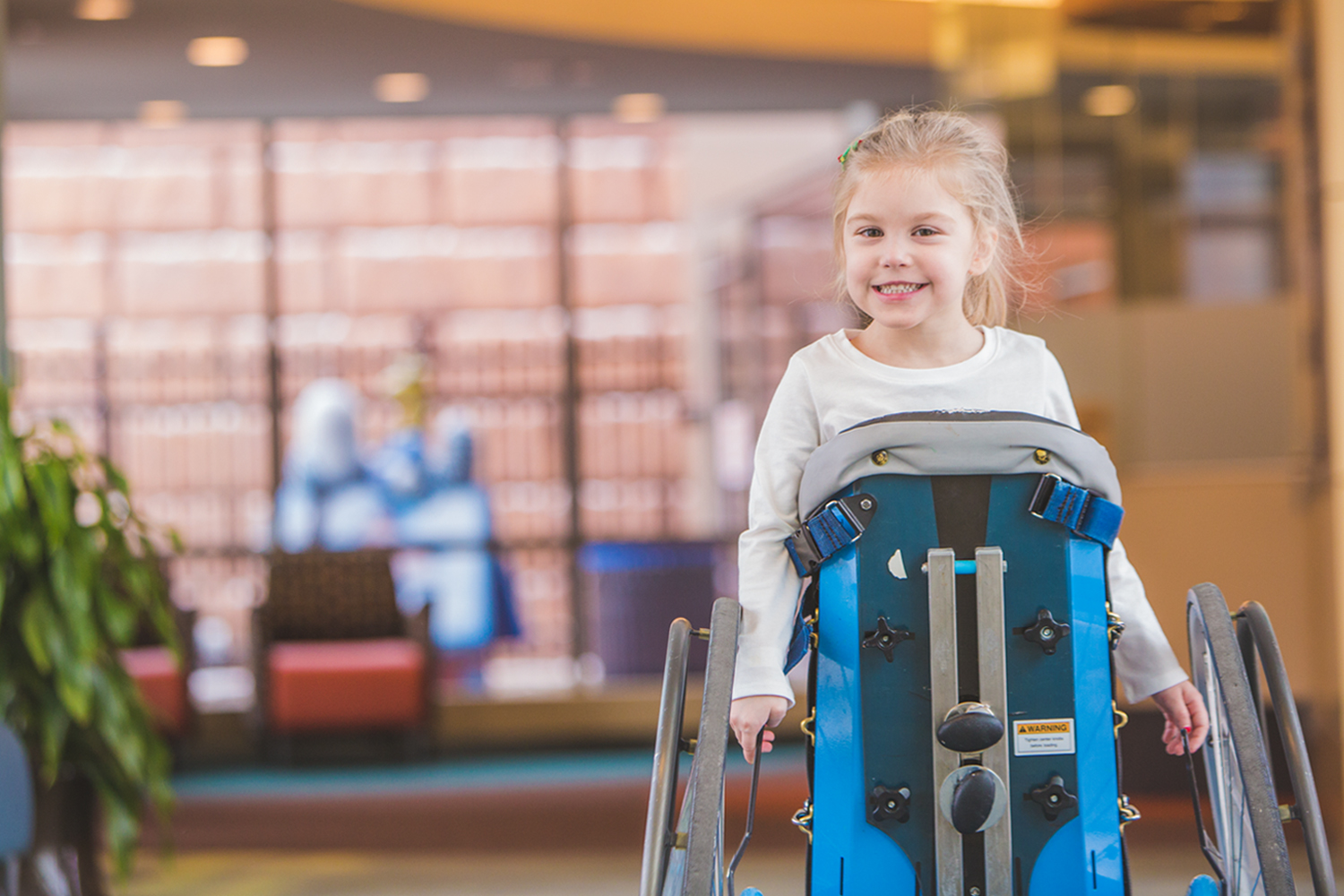
Do these symptoms sound familiar? Our 30-minute consult appointment could help get answers.
Request an appointment to connect with Gillette providers.
Meet a care team provider, find a location, learn how to get a second opinion, and more.
Gillette kids fuel our mission. You provide the spark. Donate today.

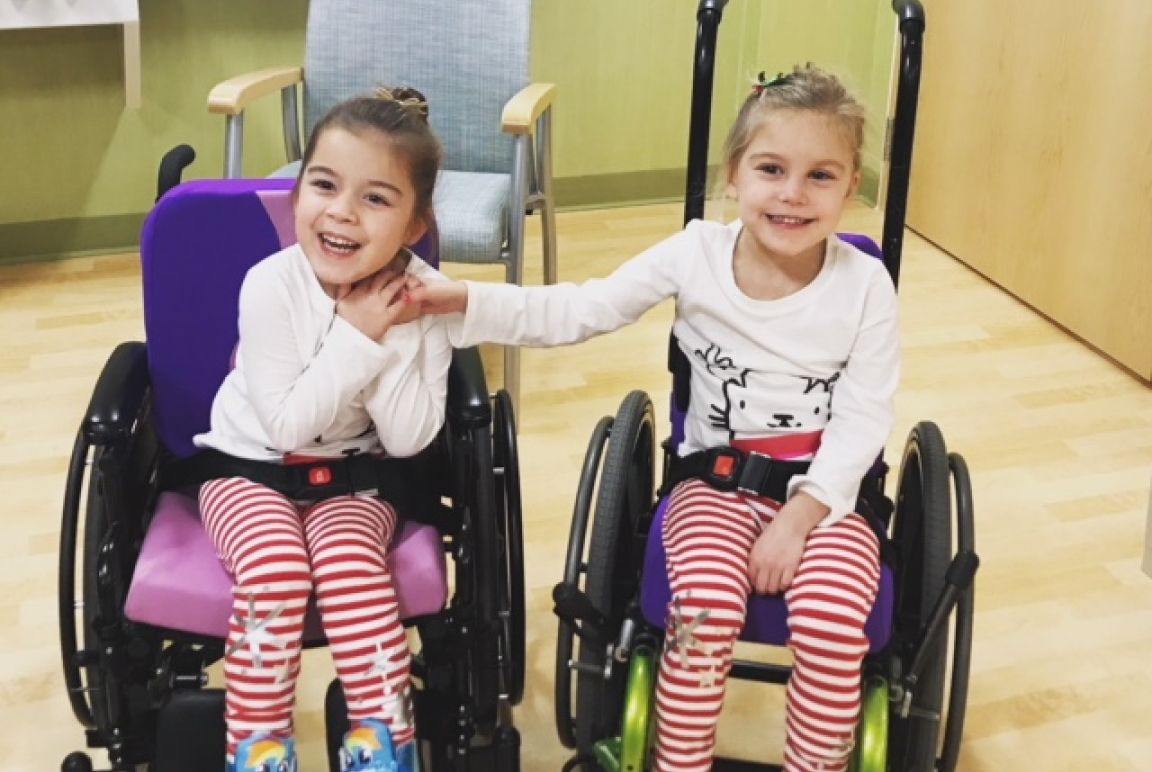 Click to open image gallery Teddy Bailey Rehabilitation Gallery, image 1
Click to open image gallery Teddy Bailey Rehabilitation Gallery, image 1
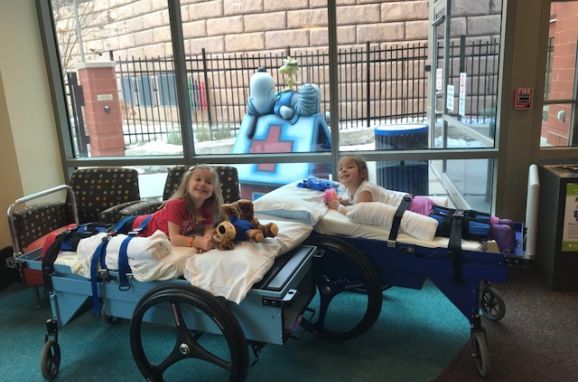 Click to open image gallery Teddy Bailey Rehabilitation Gallery, image 2
Click to open image gallery Teddy Bailey Rehabilitation Gallery, image 2
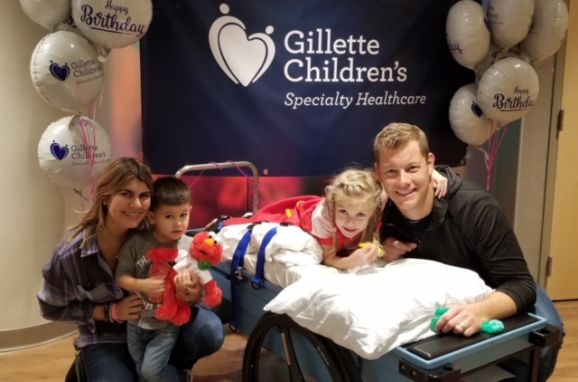 Click to open image gallery Teddy Bailey Rehabilitation Gallery, image 3
Click to open image gallery Teddy Bailey Rehabilitation Gallery, image 3
